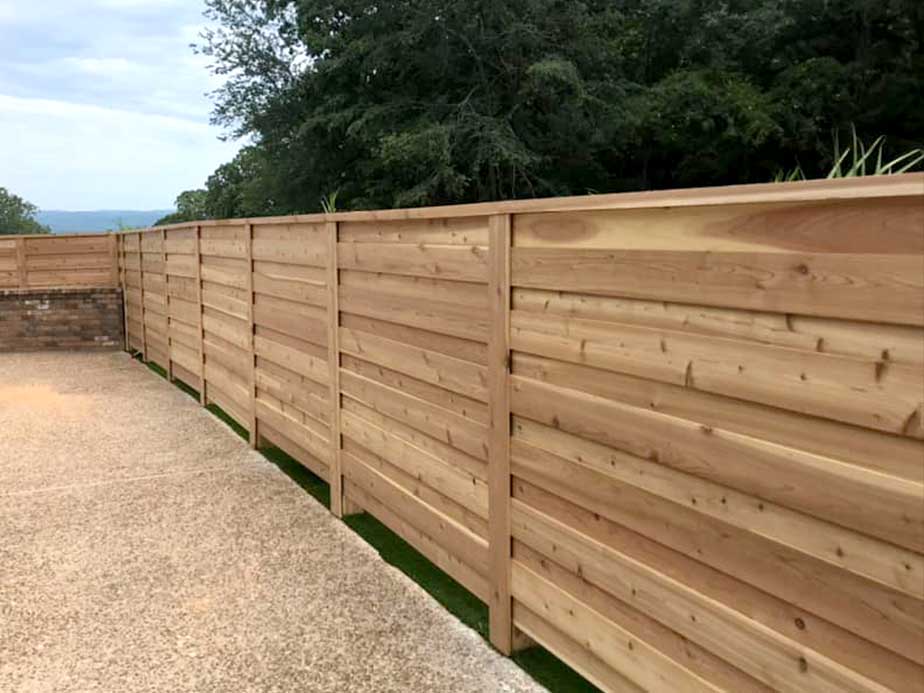All Categories
Featured

While regular maintenance can extend the life of your fence, there comes a time when repair services no much longer suffice, and it's time to consider substitute. Right here are some key indicators that your fence may require to be replaced.
- Visible Damage or Wear. Wood fences are particularly vulnerable to splitting or splintering over time, while plastic fencings can create fractures. If the damage is structural or widespread, fixing specific sections might not be sufficient, and changing the fencing comes to be essential.
- Rot and Degeneration. Wooden fencings are especially prone to rot, specifically in locations with high moisture or frequent rains. It can lead to decay when moisture obtains entraped in the wood. If you see that components of your fencing feel soft to the touch or if you see mold or fungus expanding, it's an indicator of rot. Although minor rot can often be repaired, extensive decay, especially near the base of fencing blog posts, can jeopardize the honesty of the whole fence. In such situations, replacement is usually the most effective option.
- Leaning or Tilting. A leaning fencing is a clear sign that something is incorrect with its architectural support. If the fencing proceeds to lean in spite of attempts at adjustment, it may be time to change the afflicted areas or the whole fencing.
- Rust or Rust (For Metal Fences) If you have a metal fencing, specifically one made of functioned iron or steel, rust or rust can weaken its structure. While minor corrosion can often be removed and dealt with, comprehensive rust that compromises the fencing's stability is an indicator that substitute is essential. If the rust has actually spread out significantly or weakened the steel, it can make the fencing unsafe or unpleasant. It's far better to change a greatly corroded metal fence than to continue trying repair services.
- Parasite Infestations. Wood fencings are a typical target for bugs like termites, carpenter ants, and rodents. In cases where the damages is serious, the affected fence articles or boards may need to be changed to recover the fencing's security.
- Difficulty Preserving the Fencing. If you find yourself regularly making repair work to the very same locations of your fencing, it could be a sign that the fence is past its prime. If you're spending more money on covering up old sections than you would on a complete substitute, it's time to take into consideration changing the fencing completely.
- Age of the Fencing. The age of your fence plays a significant function in its general problem. While the life expectancy of a fencing can differ depending upon the product, place, and weather condition conditions, most fencings last between 15 and 20 years. If your fence is approaching or exceeding its anticipated life expectancy and showing signs of wear and tear, it might be time to change it. Despite having normal upkeep, an aging fencing will eventually need to be replaced to maintain its performance and look.
- Out-of-date Appearance. Occasionally, a fence just ends up being outdated, no more matching the design or requirements of your building. Gradually, your preference, the landscape, or the style of your home may alter. If your fence no more matches your residential or commercial property or satisfies your demands-- such as personal privacy, security, or looks-- it might be time to consider a substitute. New secure fencing products and styles are readily available that offer boosted aesthetic, capability, and toughness allure.
- Fence No More Offers Its Purpose. Your demands for a fencing can progress over time. For instance, if your initial fencing was created for decor or to maintain animals consisted of, now you require more privacy or safety, a substitute could be essential. A fencing that no more offers its desired purpose is not just less effective yet can likewise interfere with the overall value of your property. In such cases, changing the fence with one that satisfies your existing needs is the finest option.

Final thought. If you notice any of the indicators detailed above-- noticeable damage, rot, leaning, pest problems, or an outdated look-- it might be time to replace your fencing. Replacing an old, damaged fence can boost the total value of your residential or commercial property, boost protection, and offer your lawn a fresh appearance.
Latest Posts
Practical Carpeting Look After Lasting Beauty
Published Apr 21, 25
2 min read
Practical Sophistication for Every Home
Published Apr 20, 25
1 min read
Flooring Professionals Who Treat You Like Household
Published Apr 20, 25
1 min read